Finding Your AI Balance Point: Insights from The AI+HI Project
Thought-provoking wisdom and quotes from SHRM's inaugural AI conference, hosted at Microsoft's campus in Silicon Valley
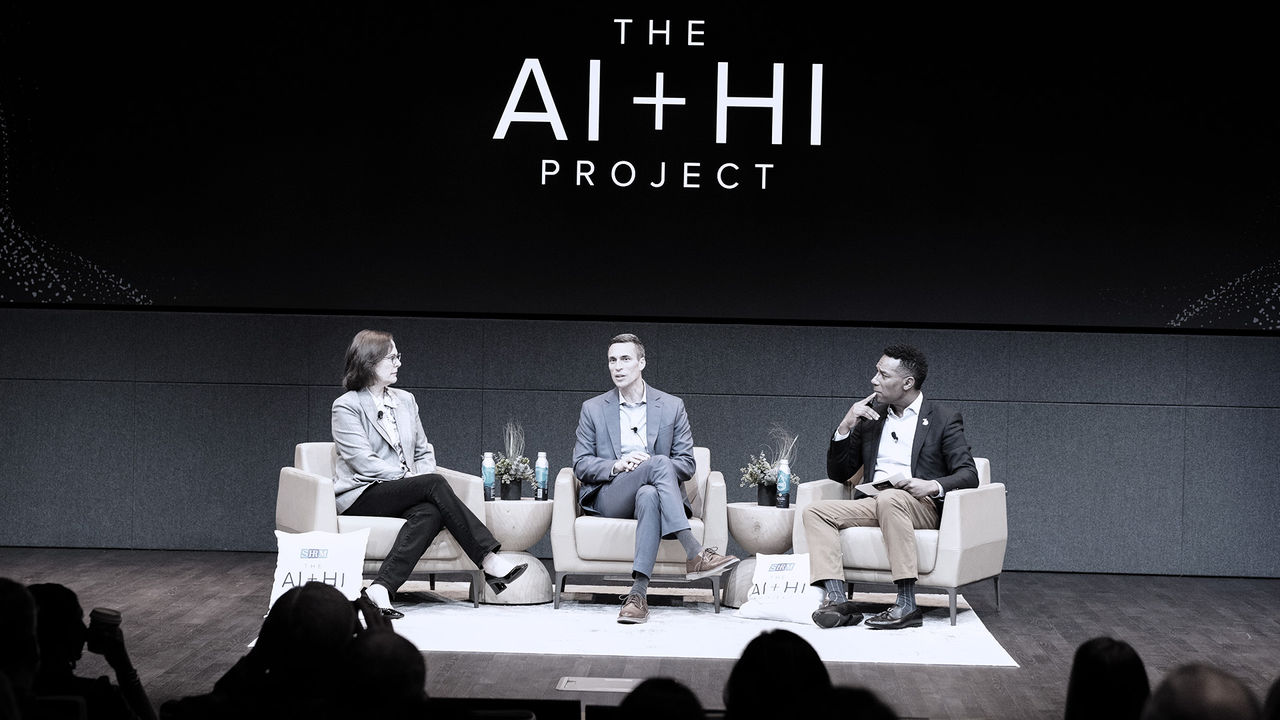
The explosion in generative artificial intelligence (GenAI) over the past 18 months is reshaping work and the workforce. With an estimated 44 percent of work tasks in line to be automated or augmented by AI, the stakes are high for organizations—and for workers themselves.
“With AI, Pandora’s box has now been opened, so companies have to accelerate their value delivery process to survive,” Fred Miskawi, vice president of CGI Global AI Enablement told attendees. “But it’s important to have the right balance. That means acceleration of the value while still doing it in a way that’s safe, secure and trustworthy.”
To help organizations navigate this wave of change, SHRM welcomed hundreds of HR executives and C-suite leaders to Silicon Valley earlier this month for The AI+HI Project, a three-day immersive discussion on the transformative potential of harnessing the power of AI and human intelligence. Here are a few of the key lessons and insightful quotes from the more than 25 speakers at the event:
You Can’t Blame AI for Biased Job Decisions
GenAI tools have the potential to both reduce and create biases in recruitment, hiring, terminations and other employment decisions. From A to Z in the employment relationship, AI-led software can now either make the decision or assist you in making the decision. But federal regulators have made it clear that employers cannot use "The AI made me do it" as an excuse for biased decision-making.
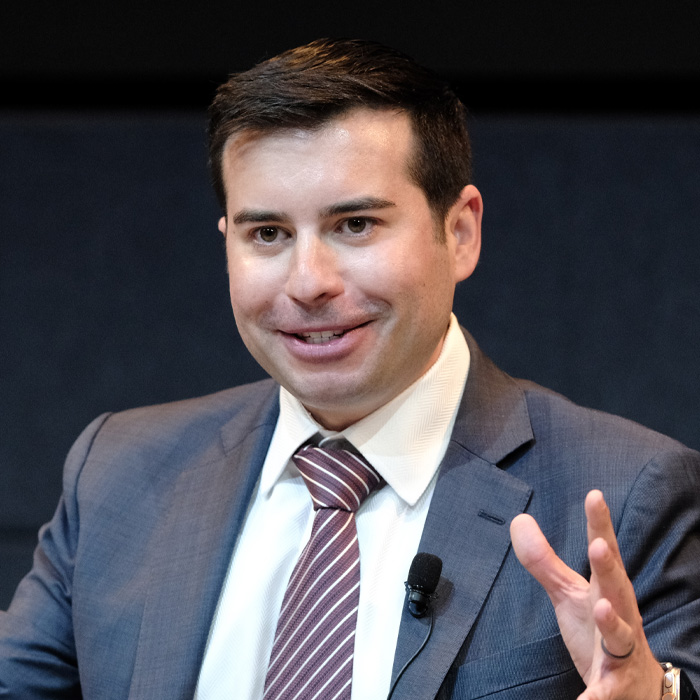
At the U.S. Equal Employment Opportunity Commission, “our federal investigators are going to be looking at the results,” said EEOC Commissioner Keith Sonderling. “We’re going to look at, ‘Does that result show bias or does that result show it was a lawful employment decision based upon the skills necessary for the job?’ That is the same standard we’re going to hold you to if you use AI or if you use a human brain.”
For example, Sonderling said, if a company uses AI-generated job descriptions that include biased skill requirements, “you’re going to be liable wherever you got those descriptions.” On the flip side, AI tools can also help companies identify potentially biased wording in their current job descriptions.
Finally, Sonderling said CHROs need to do their due diligence on vendors selling new AI tools that overpromise risk-free decisions. He warned, “You can’t have a set-it-and-forget-it approach to AI in HR because you’re dealing with civil rights, and there’s just so much that goes into that.”
How to Flip the Narrative from Panic to Positive
Headlines like “AI is coming for your job” are causing many workers to resist this revolutionary technology. But fighting or ignoring AI is pointless, and HR needs to lead the way in reframing the narrative to position the technology as a positive for employees’ jobs and careers, said Johnny C. Taylor, Jr., SHRM-SCP, president and chief executive officer of SHRM.
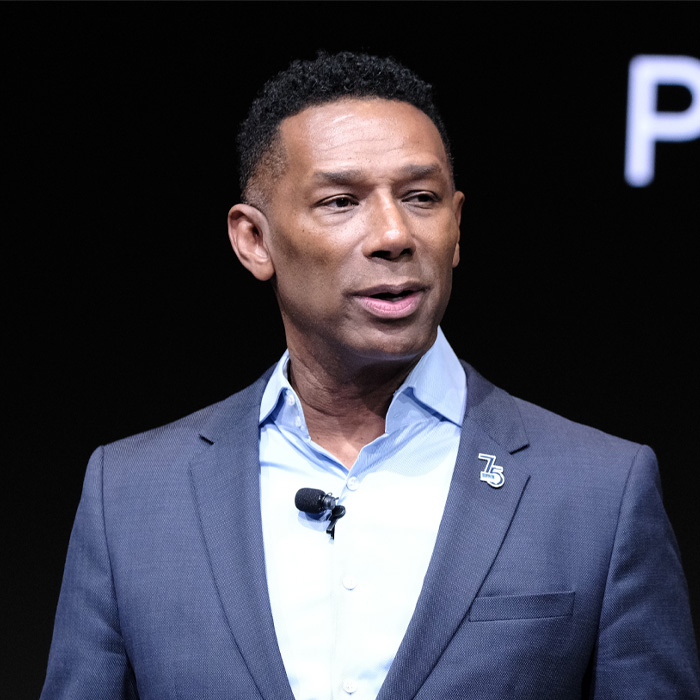
“We’ve got to get people to the point where they want to embrace this. Because, ready or not, here it comes,” he said. “We’ve got to make clear to employees that AI can make their lives better and it doesn’t have to be a huge risk to them personally and professionally.”
The key selling point, said Taylor, is to show employees how AI efficiencies can help give people more time in their day to do more human-centered work—and to leave the workplace on time.
“Imagine what AI is going to be able to do. … We can go to that nurse, that doctor, that pharmacist and say, ‘This isn’t about threatening your job, it’s going to make your life better. You’re going to have more time for what matters,’ ” he said.
The AI explosion will also require HR to lead the way in training employees on the new skills of the future.
“We believe there are ways to use AI in HR to effectively upskill, reskill and cross-skill employees. And that’s how you get people to buy into AI,” said Taylor. “Upskilling is the No. 1 way that you can embrace AI and use it for the good of our profession.”
Manage AI Like You Manage Your Employees
For AI integration to be successful, organizations can’t view it as merely a plug-and-play solution that’s led by their IT department.
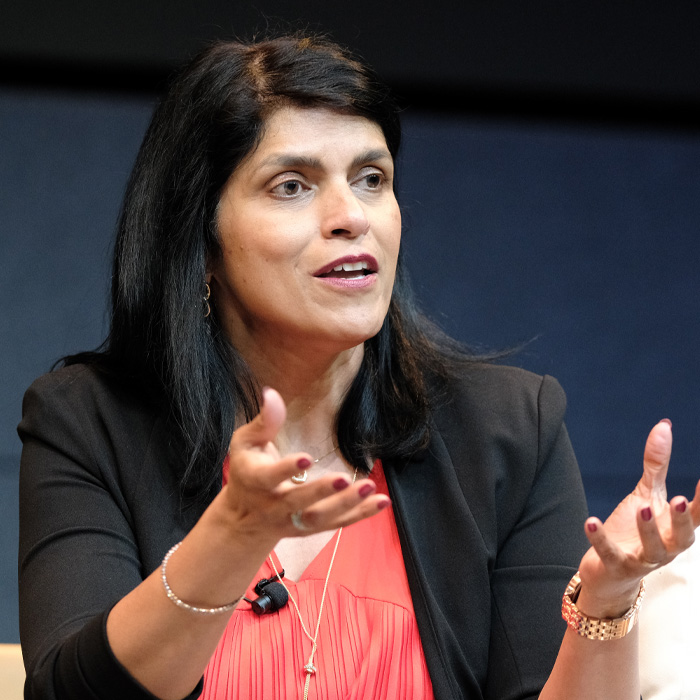
“I’m a technologist by training and have built AI products. What I see missing from AI today is actually the HR angle,” said Beena Ammanath, the Technology Trust Ethics and AI leader at Deloitte.
“AI needs to be managed like you manage your human workforce,” she explained. “With AI models, you design them, you develop them, you onboard them and they’re continuously learning. You need to continuously monitor its performance … and you may want to retire the model at some point.
“It’s not the time for HR to just use the tools that your IT teams put out. It’s time for HR to take a very proactive role in shaping how AI is going to impact the workforce … and make sure there's maximum benefit,” Ammanath said.
Break Down Silos with ‘Horizontal’ Insights
Most companies today are organized vertically in different departments. But AI, by its nature, is a “horizontal” technology that extracts data and creates insights from across all those silos. As a result, companies need to evolve their organizational structures to apply AI more holistically and embrace more cross-functional collaboration, said Neel Adhya, chief digital officer at BlackRock.
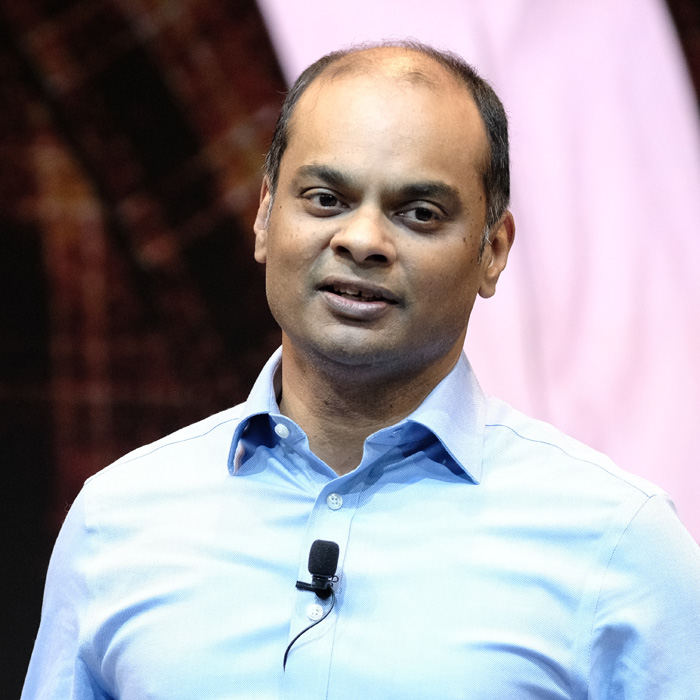 “A lot of companies will say, ‘Let’s keep the organization the way it is and embed some AI into it.’ And that’s OK. You will get some early benefits and productivity improvements,” he said. “But the companies that are really pulling away have figured out a mechanism to organize around the technology. Put AI at the center of your business model and then organize your teams to take full advantage of that.”
“A lot of companies will say, ‘Let’s keep the organization the way it is and embed some AI into it.’ And that’s OK. You will get some early benefits and productivity improvements,” he said. “But the companies that are really pulling away have figured out a mechanism to organize around the technology. Put AI at the center of your business model and then organize your teams to take full advantage of that.”
Adhya said the real ROI from AI won’t be how it improves employee productivity, but how it improves your relationship with your customers.
“In the next couple of years, it’s going to really transform how customers experience your brands and your companies,” he said. “But the highest ROI comes when AI fundamentally changes the business model of a company.”
Top Quotes: The AI+HI Project
1. The Next Industrial Revolution. “This is not a fad or a bubble. We are looking at the next Industrial Revolution. … But this is not going to take years to make a major impact on the workforce. This is going to happen over the next several months.”—Jose Cong, chief people officer, Humane
* * *
2. An Org Problem, Not a Tech Problem. “The real adoption issue of GenAI is not a technology problem. It’s actually an organizational problem. Stop thinking of AI as a technology you have to learn really fast. Organizations will need HR’s help to be able to take advantage of these technologies.” —Neel Adhya, chief digital officer, BlackRock
* * *
3. A Duty to Innovate Well. “It’s essential that we get out of these thought loops of fear and lay the groundwork for AI knowledge. Don’t be hesitant about trying ChatGPT or [Microsoft] Copilot. … We have a duty of care to innovate well, and that means leaning into this cross-collaboration.”—Amy Blankson, chief evangelist, Digital Wellness Institute
* * *
4. Will AI Take My HR Job? “HR professionals often ask me if they’re going to lose their jobs to AI. I say, ‘No, but you might lose your job to an HR person who embraces AI, because they’re going to become more efficient and deliver an ROI that you can’t deliver because you’re not embracing that technology.’ That is your threat. It’s not the technology itself.” —Johnny C. Taylor, Jr., SHRM-SCP, president and chief executive officer, SHRM
* * *
5. Get Serious About Policies and Training. “Accountability for AI will, at the end of the day, be on the employer. So it’s really important to get your policies and training in place, on both the positive and the negative of AI.” —Shlomit Yanisky-Ravid, professor, Fordham School of Law
* * *
6. The Humanity of AI. “Work is where humanity will learn how to integrate AI into our society, and it will ripple out into every corner. … So HR plays a key role in championing human-centric change management that will affect not only their companies, but the entire world.” —Nichol Bradford, executive-in-residence for AI+HI, SHRM
* * *
7. The Dangers of Data in AI. “We’re looking at a proliferation of magic lamps. And it’s not the genie that’s dangerous. It’s the wisher who does not have the skills to think through what they’re wishing.” —Cassie Kozyrkov, CEO, Data Scientific
Advertisement
An organization run by AI is not a futuristic concept. Such technology is already a part of many workplaces and will continue to shape the labor market and HR. Here's how employers and employees can successfully manage generative AI and other AI-powered systems.
Advertisement


